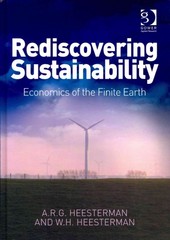Suppose we have Dagwood, who has a current income of $200K and expected future income of $160K. He has zero in current wealth and zero expected future wealth. Dagwood's behavior is consistent with the life-cycle theory of consumption. For one, he perfectly smoothes consumption and two, since he is in his peak earning years, he is saving now so that he can maintain his current level of consumption in the future. Given that Dagwood faces a real interest rate of negative 5% (- 0. 05). Please answer the following questions. a) (5 points) Calculate Dagwood's optimal consumption bundle showing all work. Then draw a completely labeled graph (the two period consumption model) depicting this initial optimal consumption bundle as point C'A (10 points for a completely labeled graph - be sure to label the no lending / no borrowing point(s) = NL/NB and the slope of the budget constraint(s)) b) (5 points) Now Dagwood goes to the doctor and finds out that he is not as healthy as he thought (too many eating binges!). The doctor tells him that he is fine now but next period he is likely to be ill and that if you had anything in life that you really wanted to do (as in leisure), you should do it now. As a result, Dagwood's preferences change so that he prefers to consume like our friend Homer, that is, Dagwood prefers to consume twice as much today relative to next period. Resolve for Dagwood's optimal consumption bundle, given these new preferences, and label as point C's c) (5 points) Ben Bernanke and the Fed are finally happy with the way the economy is headed and to be honest, is now fearful of overheating. As such, the Fed tightens and the real rate of interest rises to 10% (0.10). Given his change in preferences as above in part b), recalculate the optimal bundle for Dagwood and add this point to your graph and label as point C'c. d) (10 points) Is Dagwood better off or worse off due to the rise in the real rate of interest? Be sure to define the income effect and the implications of the income effect on Dagwood's current consumption, Then define the substitution effect and the implications of the substitution effect on Dagwood's current consumption. Comment on whether these income and substitution effects work in the same or opposite direction (le., Is it a tug of war or do they work in the same direction?) in this particular case? e) ( 5 points) How would your answer to d) above change if Dagwood never went to the doctor and maintained his original perfect smoothing preferences. Be specific and again, refer to the income and substitution effects and whether or not they work in the same or opposite directions and why (for full credit). () (10 points total, 5 for correct and completely labeled diagram and 5 for discussion) Now derive and draw Dagwood's desired savings function as we did in a previous homework problem. For the diagram, assume that it is after Dagwood went to the doctor and changed his preferences to the Homer type preferences, twice as much today relative to next period. Describe three reasons why Dagwood's savings function would shift to the right -- that is, three reasons why Dagwood would increase his desired savings at any given real rate of interest. g) (5 points) Finally, suppose again that Dagwood never went to the doctor and maintained his perfect smoothing preferences throughout. How would this savings function differ from the one you derived in part f) above. Be specific and focus on the relationship between changes in the real rate of interest and the level of Dagwood's savings in both cases







